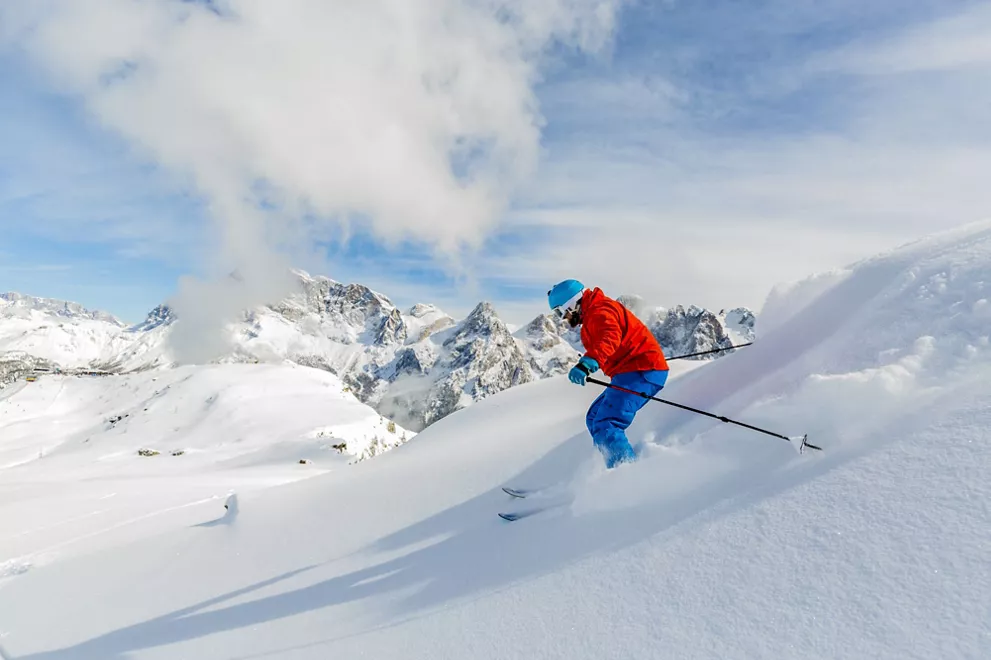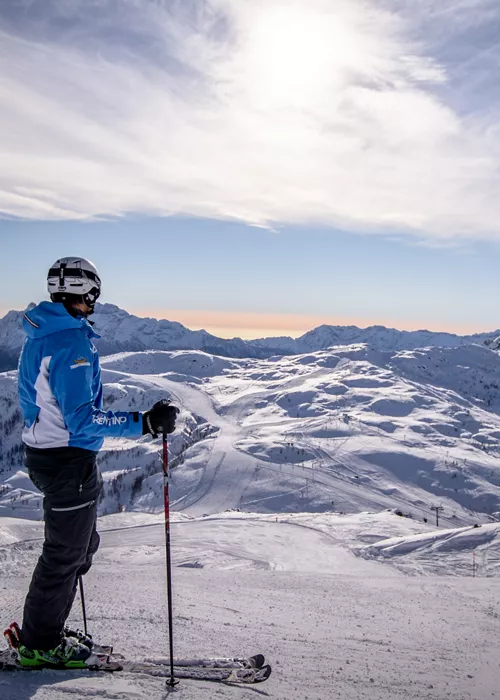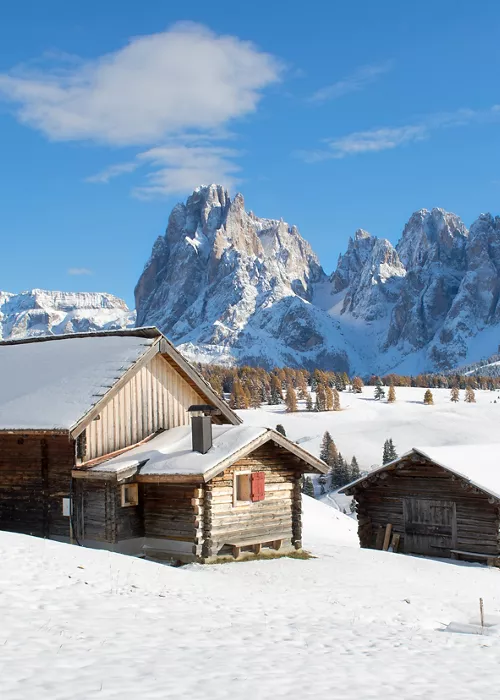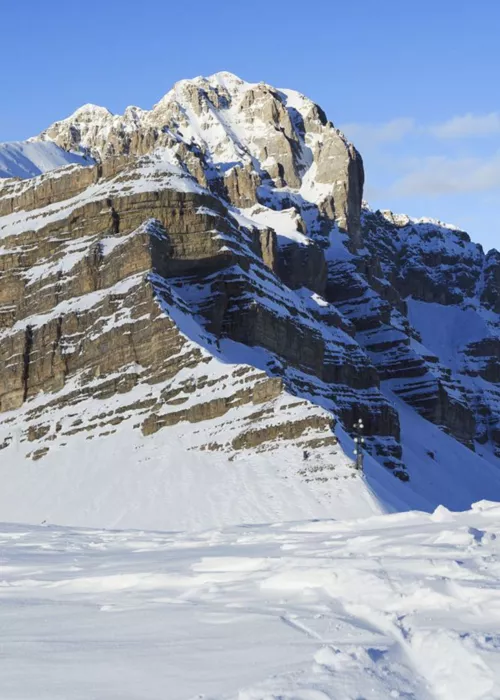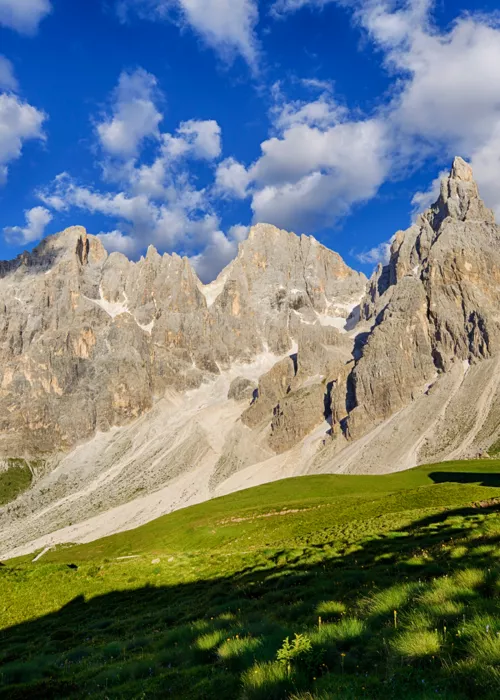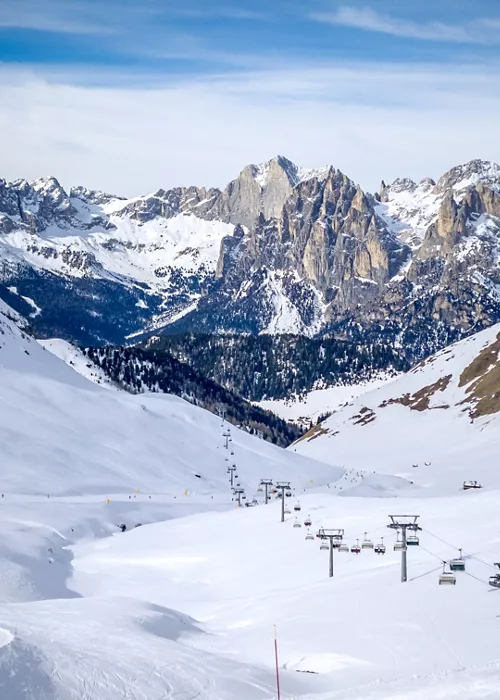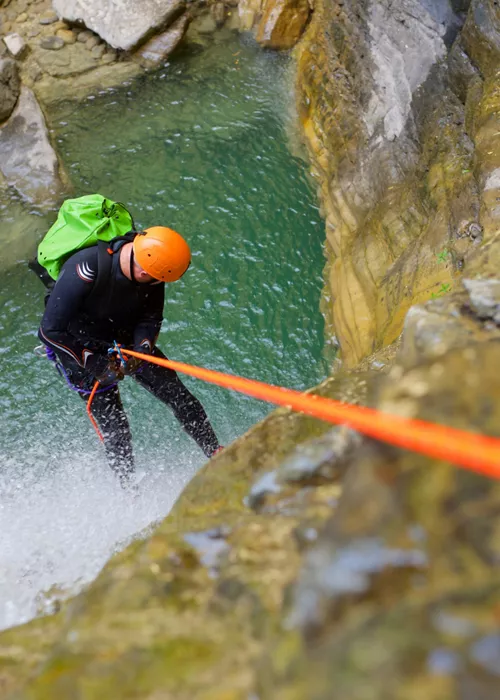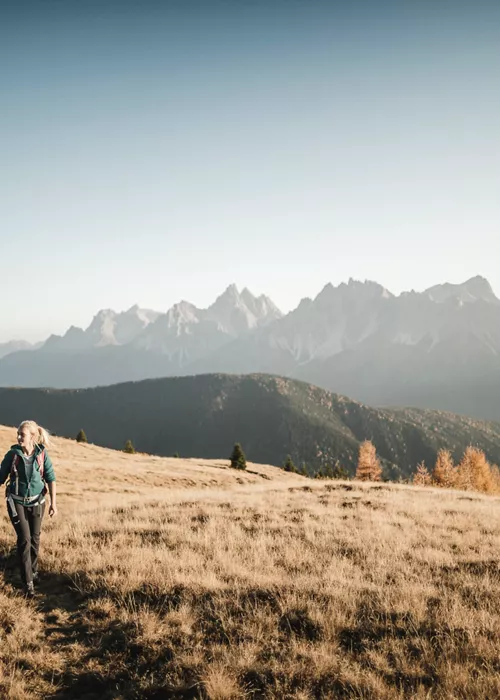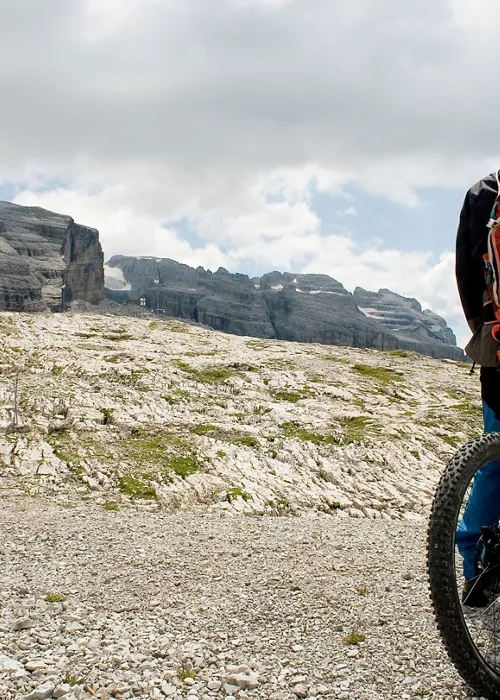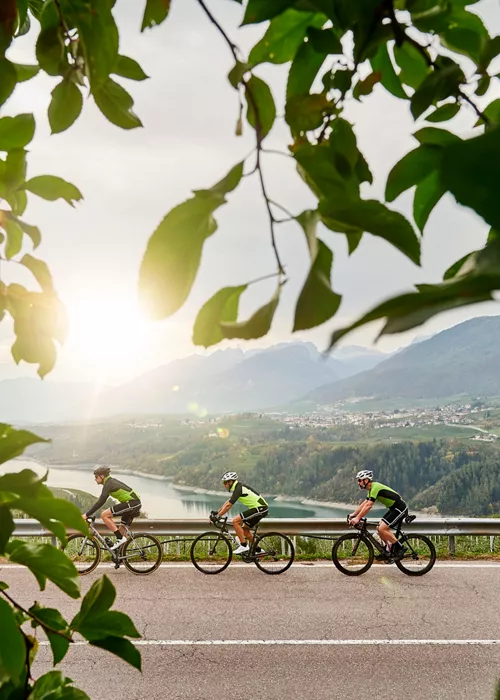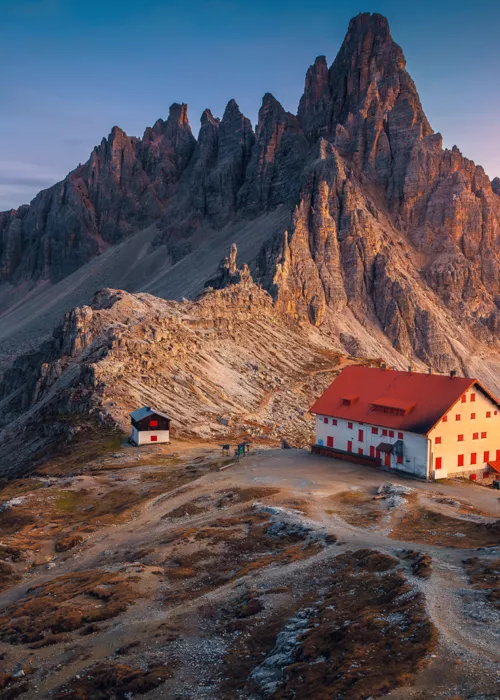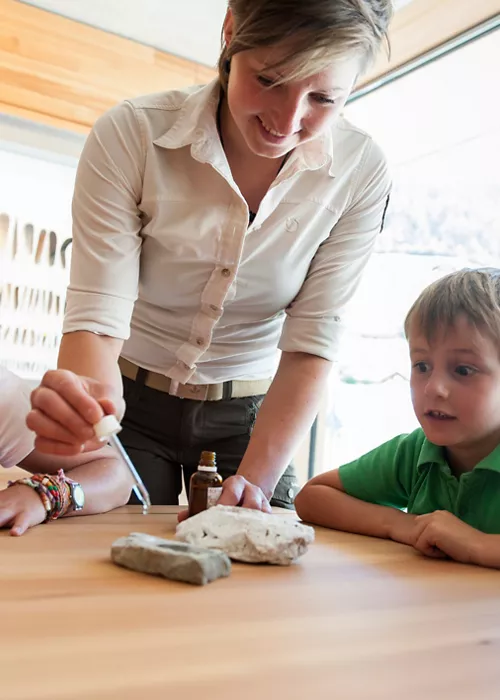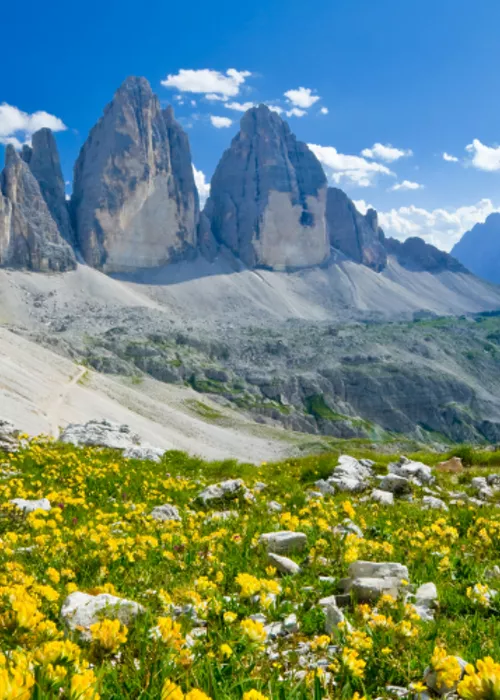San Martino di Castrozza, Passo Rolle, Primiero: fun, beauty and nature
3 minutes
The slopes are perfect, the mountain scenes captivating, Paneveggio forest enchanting, the services and entertainment rich and varied.
Not to mention the enrosadira, the spectacle of sunset on the Dolomite mountains, where the rocks glow rosey pink as the sun goes down. So mesmerising it will take your breath away, the Pale di San Martino puts on quite a show.
The slopes in the Paneveggio Natural Park
Paneveggio Natural Park, established in 1967 : 60 km of slopes that are serviced by hydroelectric energy, the water for the artificial snow collected in reservoirs in summer, with no additives. Just some of the ways even the snow industry can reduce its ecological footprint.
In Carosello delle Malghe, you go for a lighter ski, or rather a gastronomy-ski circuit, from Alpe Tognola to Malga Ces. 45 kilometres of slopes with the possibility of many stops along the way to indulge in culinary delights. It would be hard to say which are the most exciting descents of this beautiful area.
We’ll just list 3: la Tognola Uno, in the top 10 of the Dolomites, 3 kilometres through the trees of the Alpe Tognola, facing the peaks of the Pale, with different slope changes; the Paradiso slope, a black one with a spectacular panorama and; the Rekord, a red one to do in speed.
Snow parks and high altitude snowshoes
The Rolle Railz Park, on the slopes of Passo Rolle, 9 kilometres from San Martino di Castrozza, can be reached from the Castellazzo chairlifts: it offers 15 km of slopes, with a free style area enclosed by nets and a snowboard school area. In San Martino di Castrozza you’ll find the San Martino SnowPark. Located between the Conca and Acandola slopes in the upper part of the Alpe Tognola. Areas of fresh snow are serviced with ski lifts: the route is 600 metres long, with an average gradient of 18-20% and some peaks reaching 48%.
For those who prefer to walk in the snow in snowshoes or cross country skiing, there is no shortage of panoramic trails. The easier trails are towards the Calaita lake and more difficult ones towards the Alpe Tognola.
Ancient village mountains
San Martino di Castrozza is one of the oldest tourism locations in the Dolomites. The first hotel was opened in 1873 to allow people to enjoy the impressive scenery of the mountains and for the British and German mountaineers who first discovered them.
From the town, the view sweeps over the Palec group. This includes Cimon della Pala, the Rosetta, the Sass Maor, the peaks of Val di Roda and della Madonna, the peaks of Feltre, Monte Pavione and Colbrico.
Fiera di Primiero, its hamlet is also very pleasant. It houses one of the most interesting buildings in the valley, the historic Palazzo del Dazio. Dated from the second half of the fifteen century, in Austrian late gothic style. It was held by the magistrate of the mines, as mining was the main activity of the area for centuries. From the same era the Palazzo Scopoli, known today as the Casa del Cibo, house of food, to visit for a better understanding of the excellence of mountain gastronomy.
Paneveggios’ forest of violins
Paneveggio forest, a landscape of strong contrasts. Between green pastures and arid plateaus, pink dolomite rocks next to dark igneous rock formations, and large spruce trees. The area extends over 2,700 hectares. Known as the forest of violins because here - and only here in all the world - are there ideal conditions to grow trees with wood that has quality resonance.
It is said that on of the greatest luthiers, Antonio Stradivari from Cremona, came to Paneveggio to choose the best trees for his instruments. In the seventeenth century, Stradivari found a wide choice of centuries old spruce trunks that have 2 particular characteristics: it is very elastic, and it has particular lymphatic channels which, like the pipes of an organ, create resonance so it transmits sound well.
The trees are felled when the moon is waning, and with less sap in the tree trunk. The loudest spruces are also those with the slowest growth. These have very thin rings, and no knots. These are more rare, nonetheless always in high demand on the market for quality musical instruments, from violins to grand pianos. Production quantities are small though, no more than some ten cubic metres per year.
In 2018 the Vaia storm damaged part of the Paneveggio forest, affecting the spruce trees in particular. Their roots are superficial making them more prone to damage. Having removed most of the timber, their slow regrowth is now awaited.

